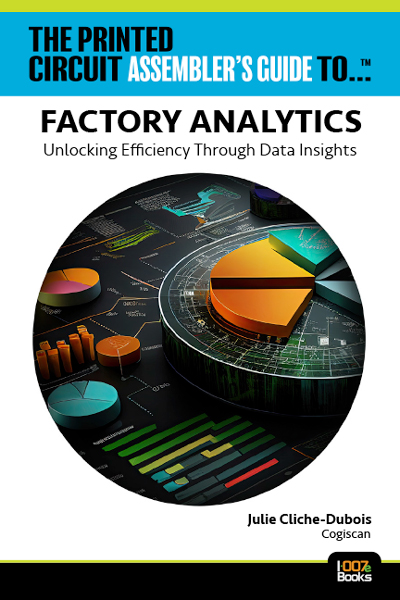-

- News
- Books
Featured Books
- design007 Magazine
Latest Issues
Current Issue
The Designer of the Future
Our expert contributors peer into their crystal balls and offer their thoughts on the designers and design engineers of tomorrow, and what their jobs will look like.

Advanced Packaging and Stackup Design
This month, our expert contributors discuss the impact of advanced packaging on stackup design—from SI and DFM challenges through the variety of material tradeoffs that designers must contend with in HDI and UHDI.

Rules of Thumb
This month, we delve into rules of thumb—which ones work, which ones should be avoided. Rules of thumb are everywhere, but there may be hundreds of rules of thumb for PCB design. How do we separate the wheat from the chaff, so to speak?
- Articles
- Columns
Search Console
- Links
- Media kit
||| MENU - design007 Magazine
Royal Mint Launches Gold Recovery Factory from E-Waste
August 8, 2024 | Royal MintEstimated reading time: 2 minutes
A pioneering new factory that provides a more sustainable source of gold and reduces reliance on mining has been unveiled by The Royal Mint.
Located at its site in south Wales, the 3,700 square metre facility uses world-first patented chemistry from Canadian clean tech company Excir, extracting gold from printed circuit boards (PCBs) found in everyday items, such as TVs, laptops and mobile phones, in minutes. Excir’s chemistry works at room temperature, creating a more energy efficient and cost-effective method of gold recovery.
The factory has scaled the innovative technology from laboratory to an industrial level for the first time and has the capacity to process up to 4,000 tonnes of PCBs from e-waste every year. It provides the UK’s oldest company with a new, more sustainable way to “mine” high-quality 999.9 purity gold. Recovered gold is already being used in the luxury jewellery collection, 886 by The Royal Mint.
According to the United Nations’ Global E-waste Monitor, the generation of worldwide e-waste is rising by 2.6 million tonnes every year. A record 62 million tonnes of e-waste was produced in 2022, up 82% from 2010.
The new factory offers a more sustainable solution to this growing environmental challenge. It has been designed to ensure that valuable finite resources are recovered, and other materials are appropriately treated for onward processing.
Anne Jessopp, Chief Executive at The Royal Mint, said: “The Royal Mint is transforming for the future, and the opening of our Precious Metals Recovery factory marks a pivotal step in our journey.
“We are not only preserving finite precious metals for future generations, but we are also preserving the expert craftmanship The Royal Mint is famous for by creating new jobs and reskilling opportunities for our employees.
“We have ambitious plans, and I am proud that we are safeguarding The Royal Mint for another 1,100 years.”
As part of its commitment to being a leader in sustainable precious metals, The Royal Mint has also been actively engaging with major industry bodies to help produce the first standard by the International Organization for Standardization (ISO) for the definition of recycled gold, helping to provide clarity to the industry, end consumer and other stakeholders.
Sean Millard, Chief Growth Officer at The Royal Mint, said: “The factory underpins our commitment to using sustainable precious metals and providing a new source of high quality, recovered gold.
“It allows us to reduce our reliance on mined materials and is another example of how we’re working to decarbonise our operations.
“Our commitment to growth, innovation and circular economy principles shapes an exciting and more sustainable future for The Royal Mint, our people and our communities.”
The decline of cash use globally has been a catalyst for change at The Royal Mint, spurring innovation and diversification. Earlier this year, The Royal Mint announced the closure of its Overseas Currency division. All 230 staff have been offered roles in new and growing business areas including the Precious Metals Recovery factory, sustaining manufacturing roles for the future.
Suggested Items
Boeing, U.S. Air Force Definitize Contract for Two Rapid Prototype E-7A Airborne Early Warning and Control (AEW&C) Aircraft
08/13/2024 | BoeingBoeing has been awarded a $2.56 billion contract from the U.S. Air Force for two rapid prototype E-7A AEW&C Wedgetail aircraft. The contract includes lifecycle development, training and support for the Air Force’s E-7A fleet.
Lockheed Martin Announces Industrial Participation, Offset Opportunities For Thailand
07/16/2024 | Lockheed MartinLockheed Martin announced it would continue its legacy of delivering economic value to Thailand through a robust industrial participation proposal – also known as an “offset” proposal – driven by the Thai government’s evaluation of the F-16 Block 70/72 for its future fighter program.
Boeing, ST Engineering Sign P-8 Sustainment MoU
05/29/2023 | BoeingBoeing signed a Memorandum of Understanding (MoU) with ST Engineering to outline potential areas of collaboration in systems integration, training, local parts distribution, support and sustainment work for the P-8A Poseidon.
UK, Japan Sign Arrangement to Cooperate in Space
03/21/2023 | Royal Air ForceThe respective leaders of the Royal Air Force and the Koku-Jietai (Japan Air Self Defence Force) have signed Terms of Reference outlining future space cooperation between their organisations.
BAE Systems to Provide Maritime Indirect Fires System for UK Royal Navy
03/02/2023 | BAE SystemsBAE Systems, Inc. has received a $219 million (GBP181 million) contract to equip the Royal Navy’s Type 26 frigates with five Mk 45 Maritime Indirect Fire Systems (MIFS).


